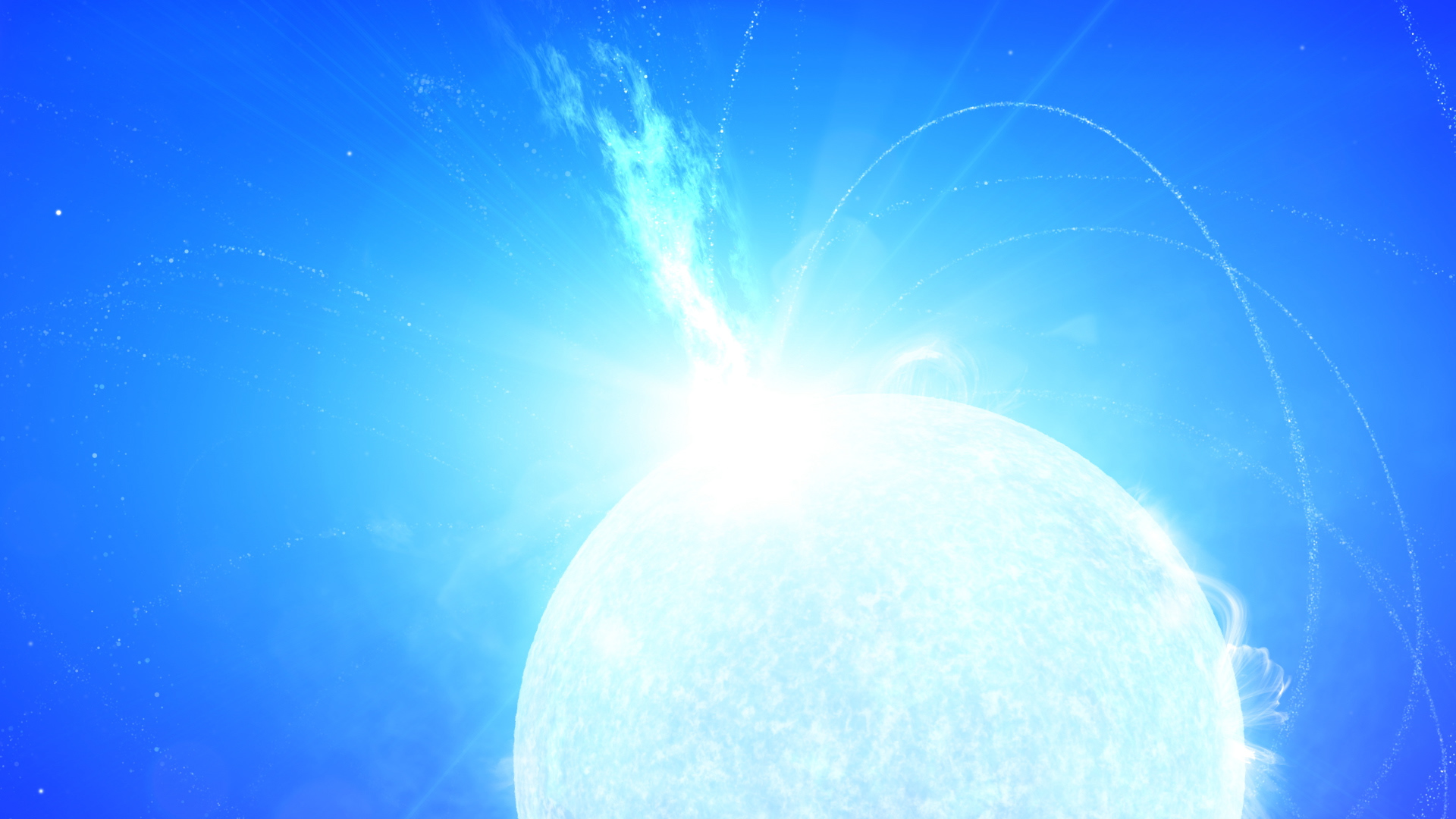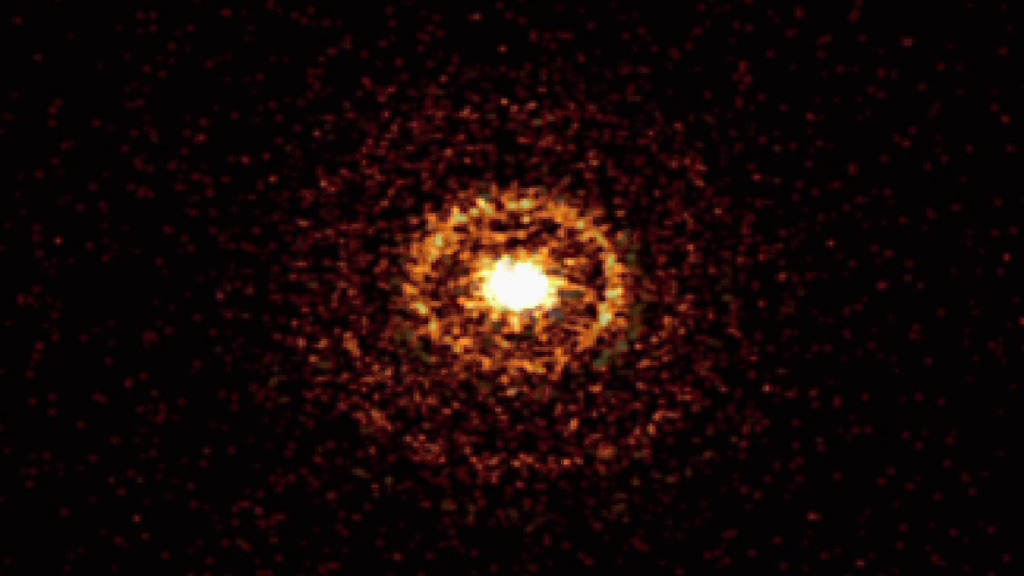Fermi Finds Hints of Starquakes in Magnetar 'Storm'
Astronomers analyzing data acquired by NASA's Fermi Gamma-ray Space Telescope during a rapid-fire "storm" of high-energy blasts in 2009 have discovered underlying signals related to seismic waves rippling throughout the host neutron star.
The burst storm came from SGR J1550−5418, a neutron star with a super-strong magnetic field, also known as a magnetar. Located about 15,000 light-years away in the constellation Norma, the magnetar was quiet until October 2008, when it entered a period of eruptive activity that ended in April 2009.
At times, the object produced hundreds of bursts in as little as 20 minutes, and the most intense explosions emitted more total energy than the sun does in 20 years. High-energy instruments on many spacecraft, including NASA's Swift and Rossi X-ray Timing Explorer, detected hundreds of gamma-ray and X-ray blasts.
An examination of 263 individual bursts detected by Fermi's Gamma-ray Burst Monitor confirms vibrations in the frequency ranges previously only seen in rare giant flares from magnetars. Astronomers suspect these are twisting oscillations of the star where the crust and the core, bound by the magnetic field, vibrate together. In addition, a single burst showed an oscillation at a frequency never seen before and which scientists still do not understand.
While there are many efforts to describe the interiors of neutron stars, scientists lack enough observational detail to choose between differing models. Neutron stars reach densities far beyond the reach of laboratories and their interiors may exceed the density of an atomic nucleus by as much as 10 times. Knowing more about how bursts shake up these stars will give theorists an important new window into understanding their internal structure.
Magnetar Burst with Torsional Waves

A rupture in the crust of a highly magnetized neutron star, shown here in an artist's rendering, can trigger high-energy eruptions. Fermi observations of these blasts include information on how the star's surface twists and vibrates, providing new insights into what lies beneath. The subtle pattern on the surface represents a twisting motion imparted to the magnetar by the explosion.
Credit: NASA's Goddard Space Flight Center/S. Wiessinger
Magnetar Burst

A rupture in the crust of a highly magnetized neutron star, shown here in an artist's rendering, can trigger high-energy eruptions. Fermi observations of these blasts include information on how the star's surface twists and vibrates, providing new insights into what lies beneath.
Credit: NASA's Goddard Space Flight Center/S. Wiessinger
For More Information
Credits
Please give credit for this item to:
NASA's Goddard Space Flight Center. However, individual items should be credited as indicated above.
-
Animator
- Scott Wiessinger (USRA)
-
Producer
- Scott Wiessinger (USRA)
-
Writer
- Francis Reddy (Syneren Technologies)
Release date
This page was originally published on Tuesday, October 21, 2014.
This page was last updated on Wednesday, May 3, 2023 at 1:50 PM EDT.
Missions
This page is related to the following missions:Series
This page can be found in the following series:Datasets used
-
[Swift]
ID: 217 -
[Fermi]
ID: 687
Note: While we identify the data sets used on this page, we do not store any further details, nor the data sets themselves on our site.



